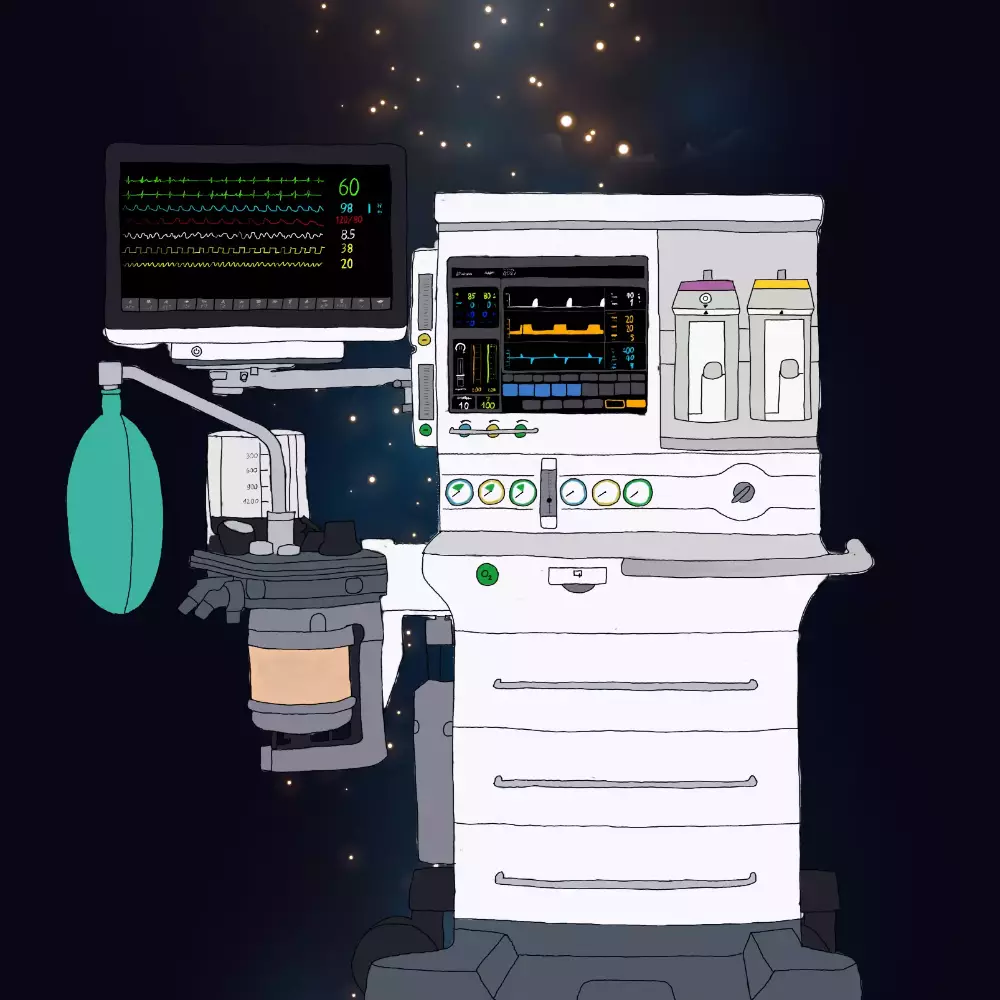Anaesthetic machine
The anaesthetic machine is the fundamental equipment of an anesthesiologist in the operating room. Understanding the functioning of the anaesthetic machine is an essential skill for an anesthesiologist, as it enables them to prevent and respond to potential malfunctions and critical situations. In our algorithm, you'll experience being a young anesthesiologist facing both typical and less common situations associated with the anaesthetic machine.
Review
Anaesthetic machine: for complex and integrated functions, we refer to anesthesiological workstation, on which we distinguish:
- high pressure system,
- low pressure system,
- anesthesia circuit,
- ventilation part,
- extraction of anesthetic gases outside the OT,
- monitoring equipment,
- protective devices.
The anesthesiologist should be familiar with the function of the individual parts of the anesthesia machine.
Before using the anesthesia machine, the following steps are required:
- computer-assisted self-tests,
- oxygen analyzer calibration,
- checking the tightness of the low-pressure circuit,
- control of the breathing circuit,
- leak test
- flow test.
The algorithm presents sequential actions that the anesthesiologist must perform with the anesthesia machine from the arrival in the operating theater, through induction, and throughout the maintenance of anesthesia. The algorithm also prompts us to address problems or complications within the individual parts of the anesthesia machine, such as dealing with a power outage.
During work in the operating room, among other things, it is crucial to quickly recognize the cause of failure in the individual parts of the anesthesia machine, identify abnormal parameters, and subsequently prompt the anesthesiologist's rapid response.
I consider the presented algorithm, along with visual documentation and videos, to be done very professionally.
Sources
Barash, Paul G., Cullen, Bruce F., and Stoelting, Robert K. Clinical Anesthesia. Translation of the 6th edition. Prague: Grada, 2015. ISBN 978-80-247-4053-9.
Dostál, Pavel et al. Základy umělé plicní ventilace. 5th extended edition. Prague: Maxdorf Jesenius, 2023. ISBN 978-80-7345-759-4.
Vymazal, Tomáš, Michálek, Pavel, Klementová, Olga et al. Anesteziologie (nejen) k atestaci. 2., přepracované a doplněné vydání. Prague: Grada. ISBN 978-80-271-3898-2.
Learning targets
2. The student has an overview of the equipment in the anesthesia workstation in the operating room.
3. The student can manage basic complications during anesthesia that can be resolved by adjusting the settings or equipment of the anesthetic apparatus.
Key points
2. It is important to recognize changes in ventilation parameters and respond appropriately.
3. Knowledge of safety standards in the operating room is crucial for reacting to potential malfunctions.
4. Basic ventilator functions can be replaced by manual ventilation or, if necessary, by using a bag-valve-mask (BVM).
Related algorithms
External links





